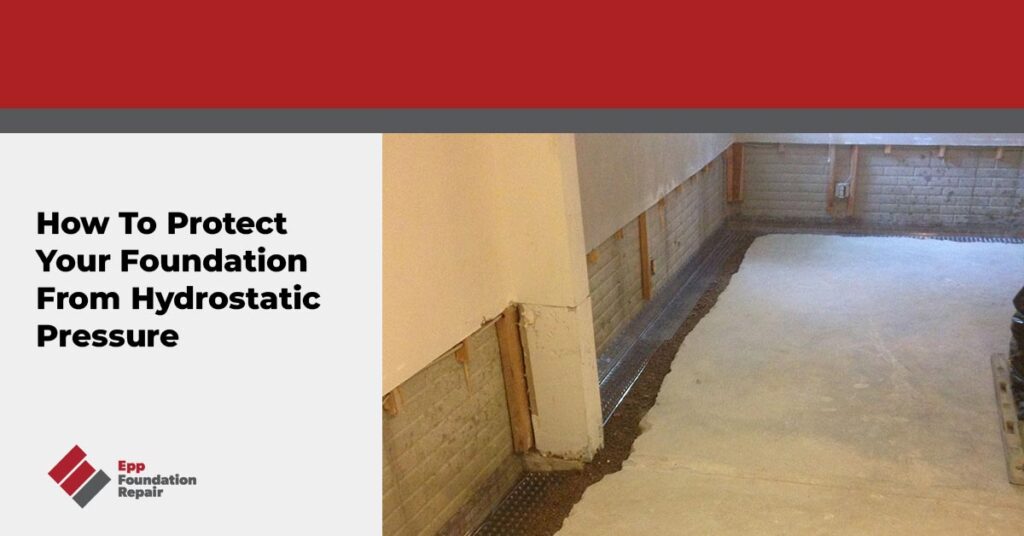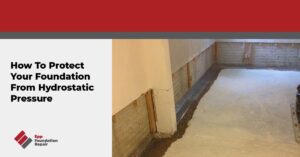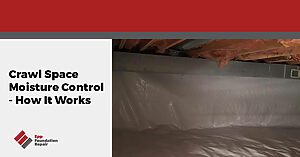If you own a home, you know that protecting its foundation is essential. Unfortunately, for crawl space and basement foundations, hydrostatic pressure can be an insidious problem that could go undetected until it’s too late, causing significant damage to your home’s structural integrity. That’s why knowing how to protect your home’s foundation from hydrostatic pressure is essential if you want to avoid costly repairs down the road.
In this article, we’ll lay out everything you need to know about keeping hydrostatic pressure at bay. Read on for tips and advice on how best to safeguard your home.
Understand Hydrostatic Pressure and How it Affects Your Home’s Foundation
Your home’s foundation is essential to the structural integrity of the entire house. One factor that often goes overlooked is hydrostatic pressure. This phenomenon occurs when water builds up in the soil surrounding your foundation because of poor drainage. Hydrostatic pressure pushes against the foundation’s walls, and over time, this pressure can cause foundation walls to bow inward and even crack. Understanding hydrostatic pressure is crucial in maintaining a structurally sound foundation. By implementing proper drainage and waterproofing techniques, you can mitigate the effects of hydrostatic pressure and keep your foundation strong for years to come.
For more information about hydrostatic pressure, see Is Hydrostatic Pressure The Reason You Have a Wet Basement?
How To Protect Your Foundation from Hydrostatic Pressure
Your home’s foundation is one of the most important parts of your house and therefore needs to be protected from the effects of hydrostatic pressure. Water is a powerful force that can push against your foundation and cause damage over time. Thankfully, there are some things you can do that will help protect your foundation from hydrostatic pressure. These include the following:
- Install a drain tile system
- Clean your gutters regularly
- Make sure you use downspout extensions
- Regrade the yard around your home
Install A Drain Tile System
Installing a drain tile system can be a game changer when it comes to ensuring proper water drainage on your property. A drain tile system is designed to quickly and efficiently move excess soil moisture toward a sump pit and then eject it away from your home’s foundation via a sump pump.
A drain tile system will keep your property dry, even during heavy rainstorms, preventing hydrostatic pressure from building up. Whether you’re dealing with flooding issues or simply looking for a proactive way to protect your property from potential water damage, including hydrostatic pressure, installing a drain tile system is a smart investment in your home’s future.
Make Sure Gutters are Functioning Correctly
Your home’s gutters may seem like a minor detail, but having them function properly is crucial for maintaining the overall health of your home. Neglecting to clean your gutters regularly of decaying leaves and other debris can cause water to spill over the side of your home and soak into the soil around the foundation. So, it’s essential to ensure that your gutters are installed correctly, free of debris, and functioning properly. This means checking for clogs, leaks and making necessary repairs to maintain efficient water flow. If you notice that water isn’t draining from your gutters as it should, it’s time to give them a tune-up. Taking care of your gutters will help prevent a headache in the long run and save you money on costly repairs.
Use Downspout Extensions
Downspout extensions attach to your downspouts and direct the water several feet from the foundation before release. This is necessary to keep moisture away from the foundation, which can cause severe structural damage if left unchecked. Downspout extensions allow you to control where the water goes to keep it from pooling around the foundation and seeping into the ground. Downspout extensions are essential to maintaining a healthy foundation and protecting it against costly repairs.
Ensure Your Yard Slopes Away From The Foundation
Ensure that excess groundwater doesn’t drain toward your foundation by regrading your yard, if necessary, so it slopes away from the foundation.
You don’t want water draining toward the foundation, where it will soak into the soil, creating muddy, marshy conditions that will lead to the build-up of hydrostatic pressure.
Signs You Should Call A Professional Immediately To Help With Hydrostatic Pressure Issues
If you’re experiencing issues with hydrostatic pressure, it’s essential to take action quickly before the problem worsens. Signs that you should call in a professional include the following:
- Cracked foundation walls
- Bowed foundation walls
- Wet basement
- A musty smell in your basement
- Soggy yard
These issues indicate there could be a problem with drainage around the foundation that has led to excess moisture in the soil. Ignoring the signs of hydrostatic pressure can lead to costly repairs. Don’t hesitate to seek help from a professional if you suspect this is a problem in your home.
Takeaway: Avoid Foundation Damage by Preventing Hydrostatic Pressure Before it Occurs
As we’ve noted, hydrostatic pressure is one of the main culprits behind severe foundation damage. However, you can take steps to prevent hydrostatic pressure from occurring in the first place. One effective strategy is installing a drain tile system around your foundation’s perimeter. Additionally, clean your gutters regularly, use downspout extensions, and make sure your yard is sloped away from the foundation. These preventative measures will help you avoid the damage caused by hydrostatic pressure.
If you suspect a problem with hydrostatic pressure, contact us today to schedule a free foundation evaluation and receive a repair estimate. Since 1994, we’ve helped clients in Lincoln, Omaha, Kearney, Southeastern Nebraska, Northwestern Missouri, and parts of Northeastern Kansas with foundation repair, basement waterproofing, crawl space encapsulation, and concrete leveling for their homes.







